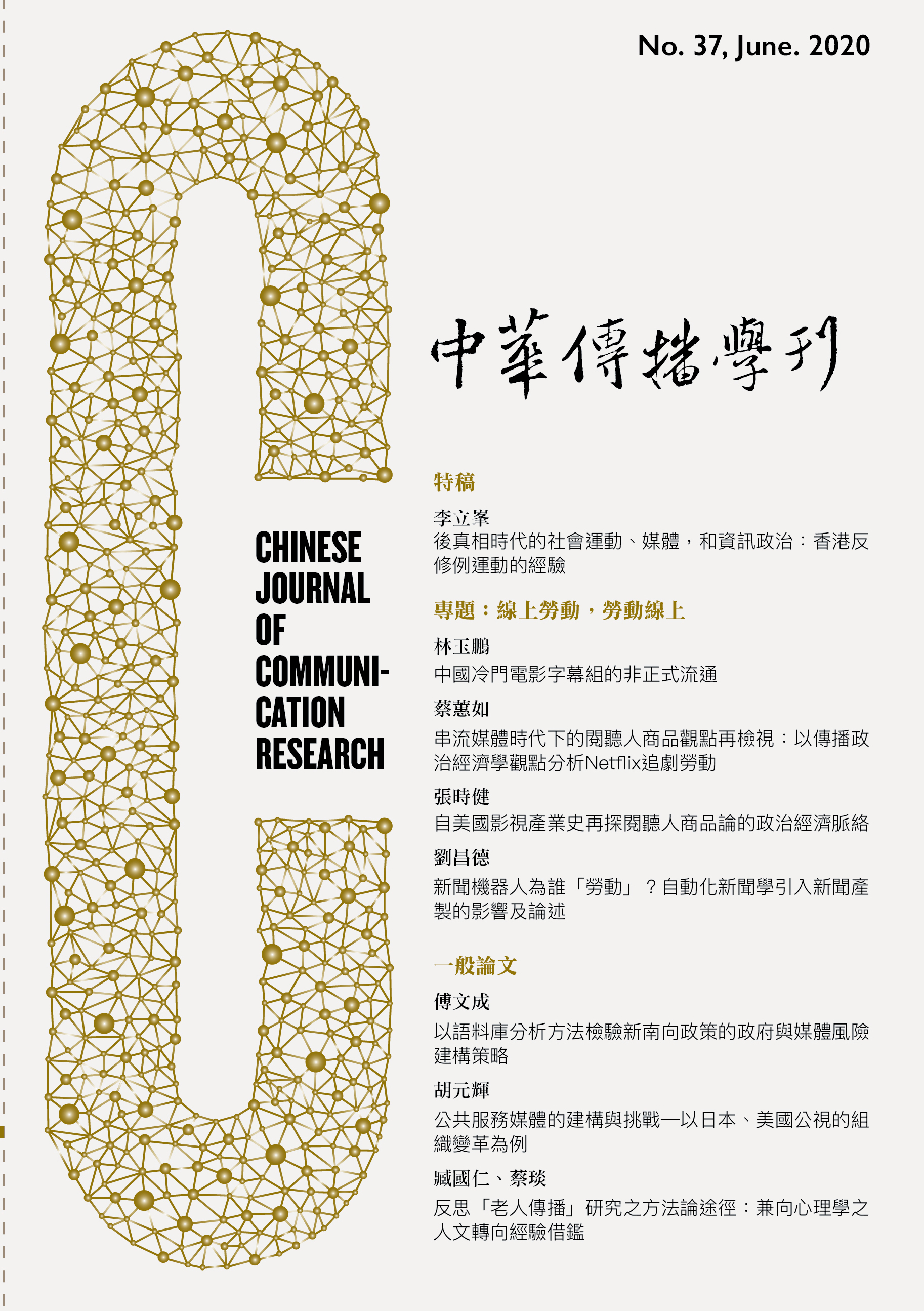 閱覽人數: 6305
閱覽人數: 6305
June
2020
No. 37
線上勞動,勞動線上
Online Labor, Labor on the Line頁數:83 - 112
作者(中)
蔡蕙如
作者(英)
Hui-Ju Tsai
關鍵詞(中)
Netflix、串流媒體、追劇閱聽人、傳播政治經濟學、閱聽人商品
中文摘要
本文試圖從傳播政治經濟學取徑,以閱聽人商品(audience commodity)與閱聽人勞動(audience labour)的角度切入,探究電視收視情境與閱聽人角色從過去電視節目編排的線性流程(linear scheduling/ programming)模式,到串流媒體時代下的內容策展模式(content curating)的改變,並以網飛(Netflix)為例,再現閱聽人對於「看電視」的時間與空間的感受如何變遷,以及閱聽人商品理論的相關概念如何解釋網飛模式下的追劇閱聽人(binge-watching TV viewers)的收視情境。最後,批判數位資本主義發展下的跨國串流媒體產業的壟斷趨勢。
英文摘要
This article explores the new explanation of audience commodity and Netflix viewers’ binge-watching practices by using the CEPC approach in the context of streaming services. Netflix is one of the most influential global streaming platforms. Netflix is not only changing how we watch TV but also fueling our binge-watching experience. Audience experiences have changed as television technologies have shifted from the linear scheduling/programming model to the curated content model. Platforms now allow a high level of personalization for each viewer. Netflix audiences can watch more TV programs under the curated content model than under the linear scheduling/programming model. In particular, Netflix viewers can enjoy watching TV programs without ads. Therefore, we examine if these viewers are not the audience commodity while Netflix revolutionized watching of movies and TV. This paper first introduces the concept of audience commodity for analyzing media advertisement models. Then, the new explanation of audience commodity in the Netflix model is explored. Finally, the influence of Netflix and its new cultural imperialism is elaborated through the political economy of communications approach.